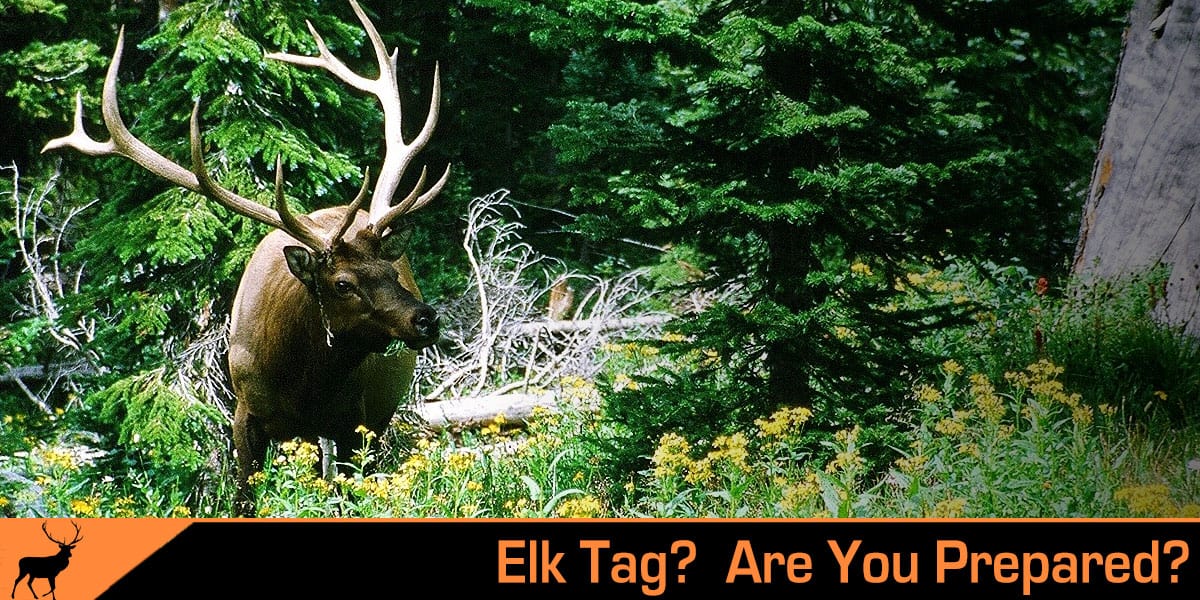 So you got your elk tag…now what? How should you prepare?
So you got your elk tag…now what? How should you prepare?
Hunt preparation is an extremely important and extremely personal subject. You could ask 100 people the question, How should I prepare for my hunt? and I guarantee you will get as many different answers. Veteran hunters make decisions for upcoming seasons based off individual experience, made up equally of what worked well and what absolutely did NOT.
For new hunters, however, the question is a bit more academic. My goal in this piece is to give new hunters a starting point – a template of sorts – by which to start developing their own perfectly curated Hunt Preparation Plan. Veteran hunters, please leave helpful comments to add to or further develop this starting point.
All hunts involve five basic elements that need to be further broken down and addressed individually; transportation, weapon, gear, food and you. Each one will be addressed according to the physicality of your hunt, the length of your hunt and your accommodations. You can make these as basic and inexpensive or as complicated and expensive as you want. Your hunt prep could be as simple as truck, gun, boots, water and you. However, assuming you’re not driving just down the road to a corn field, you will need to give a bit more thought to each of these topics.
Transportation – Getting to Your Hunt Location and Back, Happily
Let’s start with getting there and getting back…safely. It’s pretty straight forward, but should never be overlooked unless you’re writing a What Not to Do Based Off Personal Experience story. Whether you’re driving Jonathan’s Ultimate Hunting Vehicle or a borrowed 1989 pickup, your vehicle needs to be dependable and properly prepared:
- oil
- gas
- spare tire
- patch kit
- 50-gallon Rubbermaid stock tank
- couple extra gallons of water
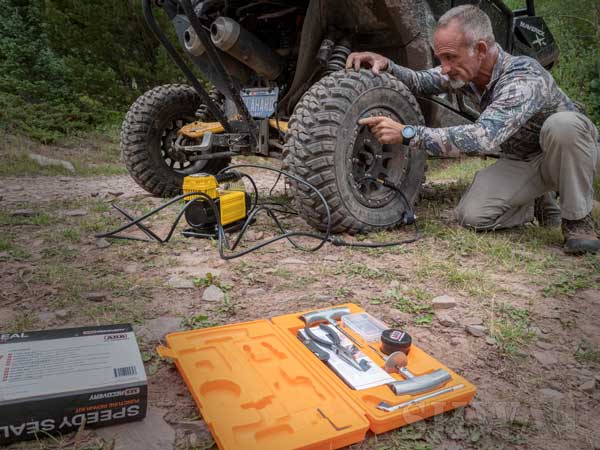
You never know when you’ll need to fix a flat in the back country.
Consider your terrain and be sure your tires, horse power, clearance, etc. are up for the challenge. This seems elementary, but you would be shocked how many gone-bad hunting stories involve poor planning regarding transportation.
Also, think about what may be put into the vehicle and be sure you are prepared to deal with mud, dirt, blood, spills and splashes. Again, this seems basic, but I’ve seen camo clad, wide-eyed newbies in brand new Range Rovers picking their way up a mountain road and I just had to wonder how that hunt was going to go.
Weapons – Beyond Picking Your Elk Hunting Weapon of Choice
Next topic, your weapon of choice. For me, this is my bow and arrows.
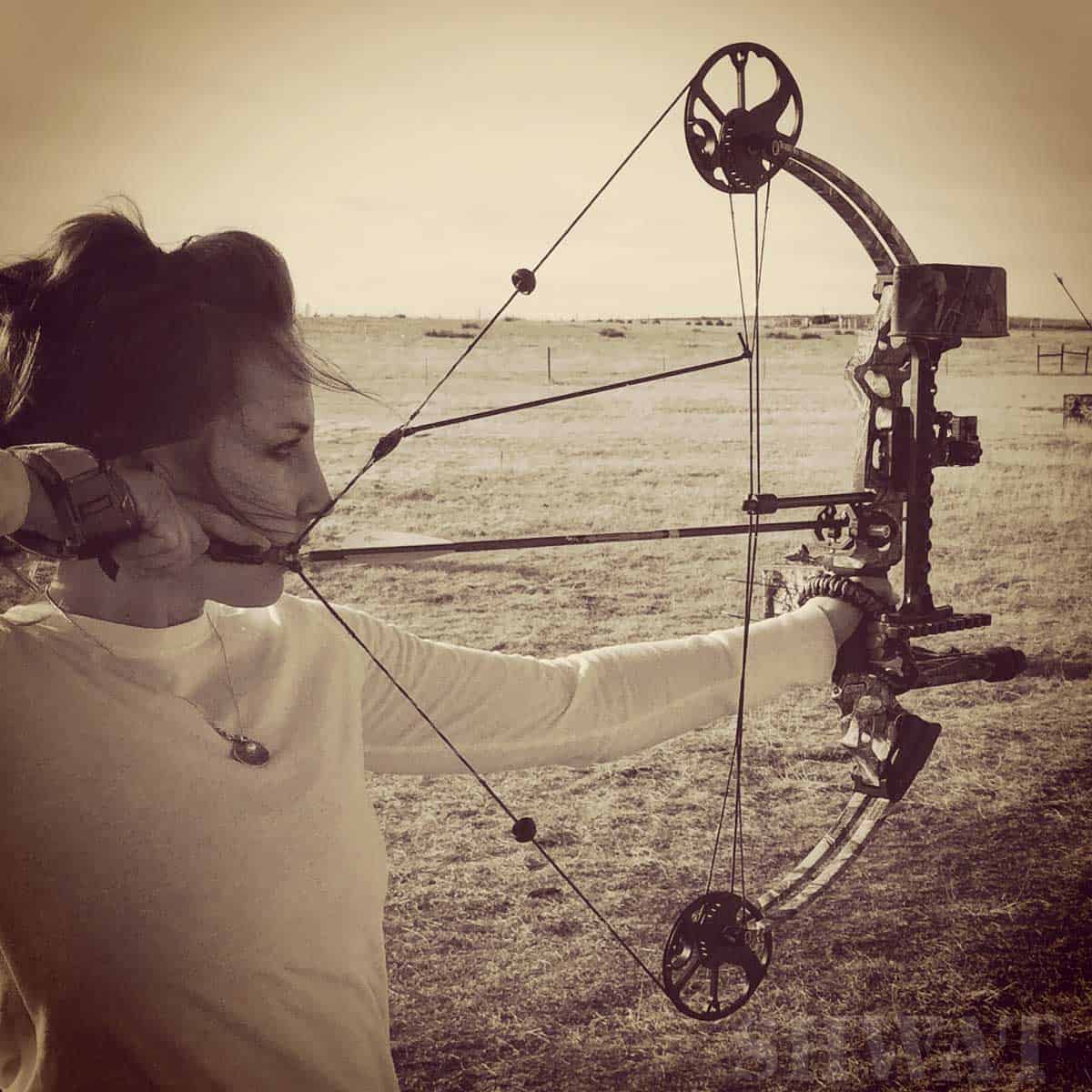 If you’re filling a rifle or muzzleloader tag, your weapon’s specifics are going to look different, but the principles for preparation are the same, bring what you need for basic repairs, be able to perform those repairs and (FOR THE LOVE…) know your weapon! Shoot it a minimum of once a month 6 months out, once a week 2 months out and once a day one week out. It should feel like an extension of your hand.
If you’re filling a rifle or muzzleloader tag, your weapon’s specifics are going to look different, but the principles for preparation are the same, bring what you need for basic repairs, be able to perform those repairs and (FOR THE LOVE…) know your weapon! Shoot it a minimum of once a month 6 months out, once a week 2 months out and once a day one week out. It should feel like an extension of your hand.
You should know how to shoot in the wind, rain, fading light and sun in your face. Crank out 10 pushups, grab your weapon and take a shot in under 30 seconds. Shoot from your feet, your knees and your butt. Rarely are you granted the luxury of time or stage on which to set up the perfect shot.
Excuses don’t result in notched tags and filled freezers, so think of the most difficult shot you could take and do your best to mimic that situation.
Gear – Kissing Cash Goodbye? Or…?
This is a funny one and one wherein the most money is wasted. Please don’t overthink this one and, other than boots, buy very basic things until you’ve figured out what works before buying an expensive opinion. Some of my favorite staples cost under $50 and that includes my day-pack that has been around my waist for countless miles up and down in the high country.
On-the-Hill Pack
This stuff needs to be with you wherever you go out there. These are your “never leave my side” essentials and should fit intelligently in a comfortable pack.
- ID and Elk Tag
- a knife
- your calls
- cellphone
- nylon rope
- bone saw
- 5 game bags
- optics
- headlamp with extra batteries
- water purifier (filter straw, tablets or other means of purifying creek water)
- basic medical kit
- GPS device with extra batteries
- paper map of your area and a compass
- matches
- rain poncho
- mole skin
- quick dry super glue
- snacks
- water
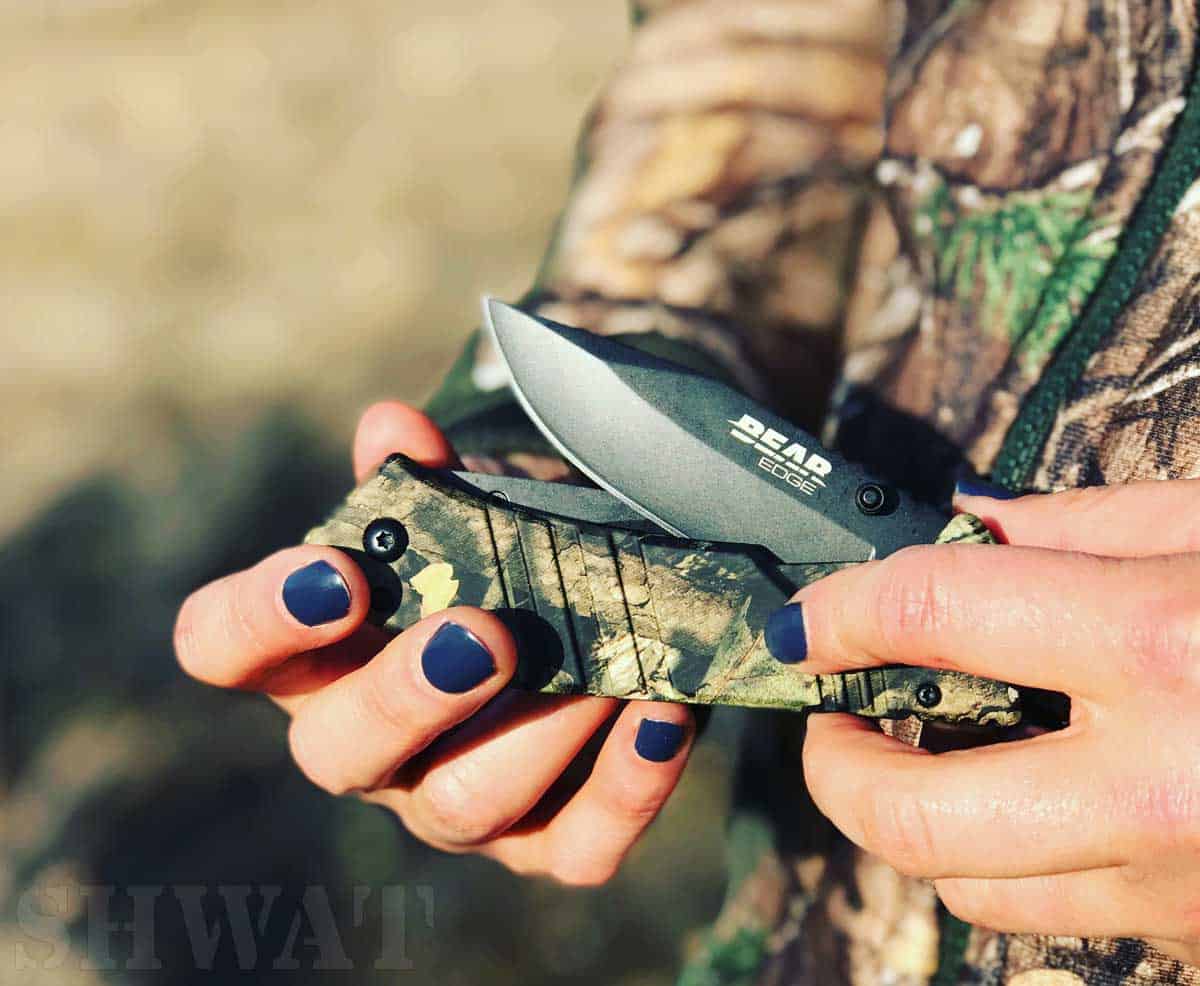
My review to this Bear Edge knife is linked above
Clothing – Dress for Success on Your Elk Hunt
Clothing is an essential part of “gear” and, other than food, is the single largest determiner of your comfort level and overall experience out on a hunt. If you’re shivering away on a frigid morning, I don’t care how expensive your weapon is, your shot won’t count for anything.
Think layers and synthetic materials. Base layer should be moisture wicking and fitted. I always do at least 4 layers on top and three on the bottom. Also bring a waterproof layer and a layer for freezing temperatures. Both these can stay at camp unless the weather calls for adverse elements on that day, in which case, bring one extra layer than you think you’re going to need.
Again, you need to experiment with your clothing as personal preference is EVERYTHING. I would encourage you to think outside the “hunting” box. My favorite boots are Salomon extreme hiking boots and ski clothes often offer better technology for dealing with sweat and cold temperatures than many camo clothing companies.
 Boots for Elk Hunting
Boots for Elk Hunting
Here is where you can spend money if you want but know the boots before you buy them. $650 does not mean it’s the best boot for your foot. Boots should be light, supportive, waterproof and ready for tough terrain. If you’re going to be out in wintry weather, something with 1000gm insulation is my personal preference.
If you are going to be covering a lot of ground be sure your boots are broken in! This means a minimum of 30 miles on the soles. If that herd has moved to the next ridge, chasing them may not be an option if your boots aren’t tried and true. Your egg-sized blisters are going to decide that your day is done. I’ve literally packed out meat with my feet wrapped in duct tape to keep my socks from sticking to the raw flesh inside my boots.
The Pro Staff here at SHWAT™ has done a number of helpful boot reviews, you’d do well to take a look at them.
Elk Camp Considerations
Other than coolers for the meat (plan on 240 quarts-worth of space for meat and ice), which can be left with your vehicle, the rest of your gear is determined by your accommodations. If you’re a day hunter, skip this section. If you’re using an outfitter, they will most likely be handling this part of the hunt. Staying in a hotel, cabin, yurt or camper? Just be sure you have warm bedding, personal care items and a way to cook food. If you’re a straight up DIY’er on a multiday hunt in the backcountry, let’s talk more gear.
The basics are
- tent (something light, tight and waterproof)
- sleeping bag (at least a -20-degree rating)
- a pot
- a pan
- a metal spork
- waterproof matches or lighter
- tarp (cuz you just never know)
Again, you can add items as you see fit, but these are my ride-or-die basics.
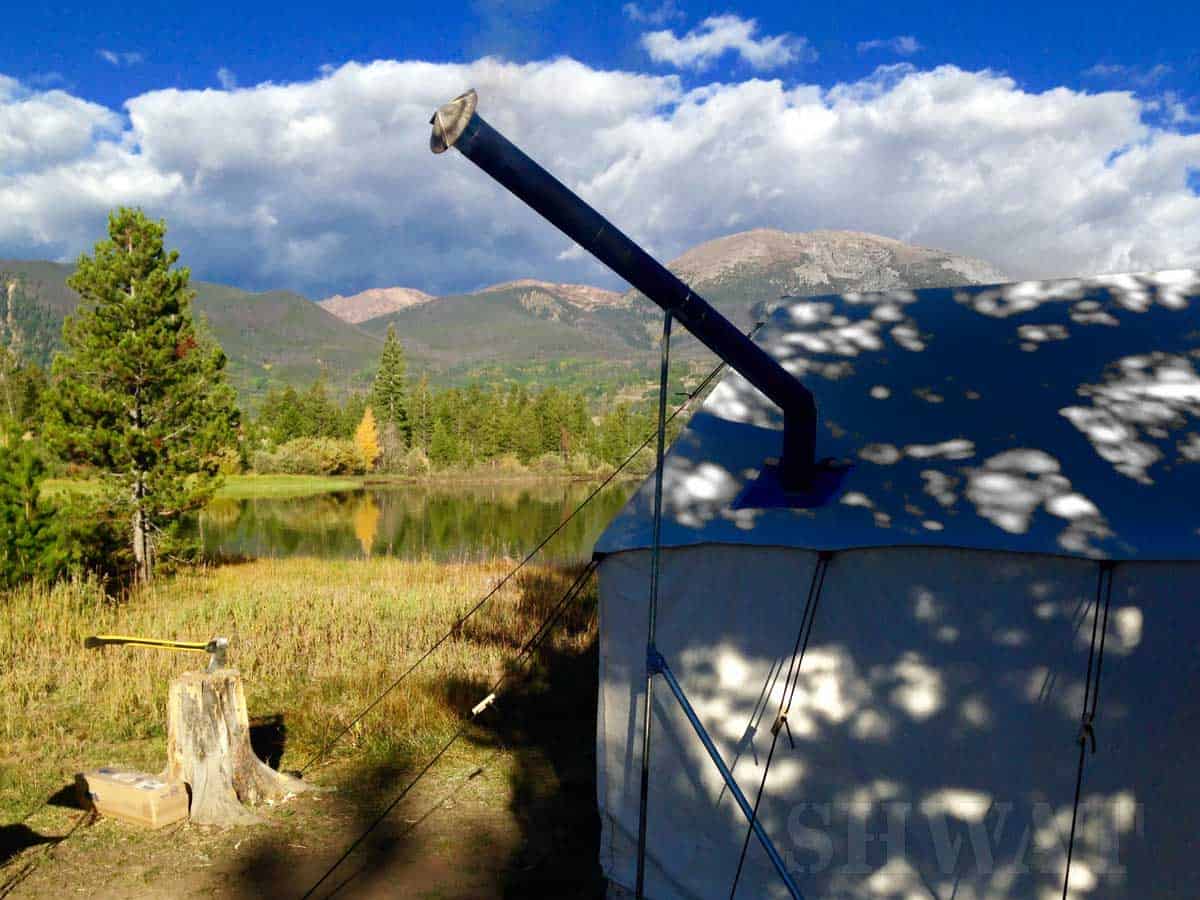
My favorite home away from home – Elk Camp!
Food – Fuel for Your Elk Hunting
This one is of utmost importance and is my person favorite – FOOD! Again, if you’re a day-hunter, staying in a town or hunting with an outfitting service, this topic is not something you need to worry about other than your snacks on the hill. For multiday back country hunting, this is a big one. If you don’t get this one right, you’re 10-day hunt gets cut in half pretty quickly. Think lightweight, calorie dense, low sugar. Things like:
- peanut butter,
- pre-cooked bacon and Bacon Bits
- trail mix
- protein powder and
- protein bars
- pancake mix
- instant oatmeal
- instant coffee (or powdered, hot drink of choice)
- tortillas
- dehydrated beans
- powdered Gatorade
- Raman Noodles
- tuna pouches
The amount of food and water is something you need to experiment with as each person is quite different. I don’t drink much water while out on the hill, I do most of my hydrating back at camp; however, I eat quite a bit while hunting. This means my pack is going to have less water and more peanut butter. Initially, plan on 500-700 kCals of food and 32oz of water for every 6 hours you plan to be away from camp or your vehicle. Adjust from there.

Fuel. Simple and good.
Food for Elk Camp
Around the campfire is where you make up for any caloric deficit you may be in because of the day’s physical demands. Renourish and rehydrate with simple, calorie dense foods. Instant oatmeal, bacon and instant coffee are great breakfasts and a lunch of peanut butter and jelly sandwiches are about as good as any porterhouse steak when you’re dining on a mountainside glassing the tree line for elk. Dinners should be something hot as you are going to want any extra heat you can get before spending the night in the cold. You can get creative but don’t overthink it. For water, plan on a gallon a day per person. I would recommend a filtration/purification and storage system since lugging water is NOT a great option…
Getting YOU Ready for Your Elk Hunt
Last on our list of basic elements to prepare is YOU. As with everything else, your preparation depends on the severity of the physicality and duration of your hunt. Be fully aware of your physical limits and be prepared to deal with them. The more conditioned you are, the fewer limits you will have.
If you’re hopping out of your truck and walking 500 yards to a meadow, you’re probably good to go as you are. But beyond that, please properly condition your body. Physical preparation is the difference between hating every minute of every mile and thoroughly enjoying day after 15-mile day.
Elements of a good regimen include:
- resistance training
- weighted squats and lunges
- 5-8-mile cardio days and plyometrics.
Don’t start training the week before your hunt. Give yourself at least 4 months of conditioning building the intensity as your hunt approaches. Here’s the thing, elk are elite athletes. They bring their A-game every single day. Give them the respect they deserve and bring yours!
That’s about all I have. Understand that you are not going to be able to anticipate every situation, but proper and purposeful preparation can greatly increase your chances of having a wonderful experience out there. Be smart. Be responsible. And, above all, stay safe.
Happy hunting!



Great article! I appreciate the lists and practical tips to put into action on my next hunt.